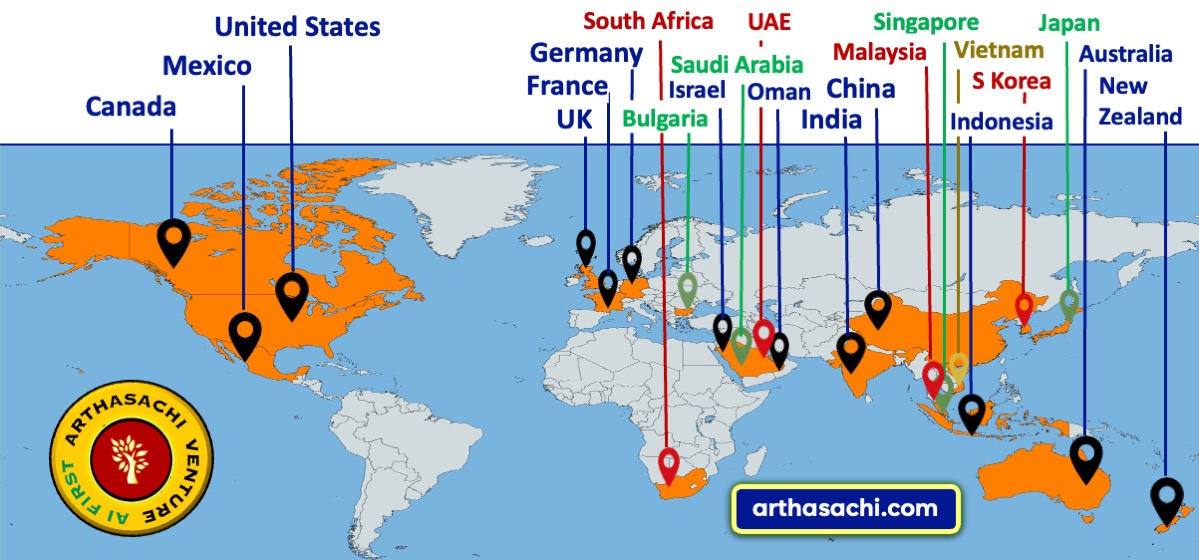
The US-EU Trade Deal: Comprehensive Overview and Bilateral Trade Insights
The United States and the European Union, representing the world’s two largest economies and trading blocs, have forged a historic new trade deal in July 2025 that will fundamentally reshape transatlantic commerce, investment, and economic cooperation. This agreement is being hailed as one of the most consequential transatlantic trade arrangements of the century, both for its sweeping economic impact and for averting a potential escalation into a broader trade war.
Key Highlights of the 2025 US-EU Trade Deal
1. Tariff Adjustments and Market Access
- 15% Baseline Tariff: The US will impose a 15% tariff on most EU imports, including automobiles, pharmaceuticals, and semiconductors. This is a significant jump from the previous average tariff rate of about 1–1.5% and is intended to address long-standing concerns over the US goods trade deficit with the EU.
- Tariff Elimination for Strategic Sectors: Both sides agreed to zero tariffs on critical items such as aircraft, plane parts, certain chemicals, semiconductor manufacturing equipment, and some agricultural products and raw materials. This mutual elimination is designed to ease pressure on strategic industries and foster high-value trade.
- No Digital Trade Barriers: The deal ensures that customs duties on electronic transmissions remain at zero, and the EU commits not to implement network usage fees.
2. Massive Investment and Energy Commitments
- EU Energy and Investment Pledge: The European Union has committed to purchase $750 billion in US energy products by 2028 and to invest another $600 billion in the US economy over the same period. These investments include major deals in energy security and supply chain resilience.
- Military Procurement: The EU will also make significant purchases of US military equipment as part of the agreement, further strengthening defense and security ties.
3. Structural and Regulatory Reforms
- Non-Tariff Barriers: The agreement includes commitments to streamline processes and reduce non-tariff barriers, especially for food and agricultural trade, by simplifying sanitary certifications and technical requirements.
- Rules of Origin: New, robust rules of origin will ensure only US and EU-produced goods benefit from the deal, preventing “free rider” countries from exploiting the agreement's preferential terms.
4. Economic Security and Supply Chain Resilience
- Both parties will strengthen cooperation on supply chain security, manage export controls, and enhance investment review mechanisms to address economic security risks and duty evasion, especially in strategic sectors such as semiconductors, metals, and pharmaceuticals.
5. Resolution of Broader Trade Disputes
- The deal averts the threat of a trade war and has brought stability and predictability for both US and EU businesses, which together account for 44% of the world economy and nearly a third of global trade.
Total Bilateral Trade: The Scale of the US-EU Economic Relationship
- Near $2 Trillion in Annual Trade: In 2024, total trade in goods and services between the US and EU approached $2 trillion, with an average daily trade volume exceeding $5 billion.
- Goods and Services Breakdown:
- Goods: Total bilateral trade in goods reached €851 billion ($922 billion) in 2023, with the EU exporting €503 billion ($545 billion) to the US and importing €347 billion ($376 billion) from the US.
- Services: Trade in services between the two reached €746 billion ($808 billion), with the EU exporting €319 billion ($345 billion) and importing €427 billion ($462 billion) in services.
- Investment: Transatlantic investment is colossal, with US and EU firms holding a combined €4.7 trillion (over $5 trillion) in each other's markets, supporting millions of jobs on both sides.
Implications & Strategic Assessment
Winners and Losers
- US Manufacturers and Energy Producers are the biggest winners, gaining preferential access to the EU’s vast markets and benefiting from huge energy and defense procurement deals.
- European Exporters face higher costs due to the 15% tariff on most goods, but have avoided even more punitive tariffs that had been threatened. Some sectors such as aerospace, chemicals, and chip equipment benefit from tariff elimination, while autos, wine, and consumer goods face new hurdles.
- Global Trade Stability has been bolstered as this agreement resolved prolonged disputes and set a new framework for future negotiations between the world's largest economies.
Broader Impact
- This agreement is positioned as the largest trade deal ever made between the two partners, designed to rebalance the relationship, encourage US production, and underpin continued transatlantic leadership in trade, technology, defense, and regulatory standards.
- The deal is already serving as a template for upcoming trade talks with other major US trading partners, potentially shaping a new era of global trade policy.
In Conclusion
The July 2025 US-EU trade pact redefines transatlantic commerce with both immediate and long-term effects. By dramatically increasing bilateral tariffs on EU goods (but preventing even steeper hikes), unlocking massive EU investment in the US, and eliminating barriers in critical industries, the agreement sets a new foundation for economic cooperation, competition, and security between the world's two largest trading blocs. The deal encompasses nearly $2 trillion in annual bilateral commerce and represents a generational shift in global economic leadership.
Top News
Other News
MARKETS
WEALTH
ECONOMICS
START UP
TECHNOLOGY
BUSINESS
Alliances and Partners

Arthasachi Venture Footprints



















